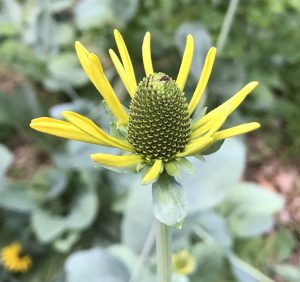 I had heard of oil pulling before starting naturopathy school but as we dove into the world of oral health, I became fascinated with incorporating ancestral methods into modern life. We learned about the history, how it promotes a clean mouth (which is the entry system to our gut) and we even learned that each tooth has a meridian associated with it. I was hooked and have been using this practice for a few years along with tongue scraping.
I had heard of oil pulling before starting naturopathy school but as we dove into the world of oral health, I became fascinated with incorporating ancestral methods into modern life. We learned about the history, how it promotes a clean mouth (which is the entry system to our gut) and we even learned that each tooth has a meridian associated with it. I was hooked and have been using this practice for a few years along with tongue scraping.
Oil pulling originated in the medicinal practices of Ayurveda. Known as gandusha, it’s a method used for centuries. It finally gained popularity in recent years in the United States and in the naturopathic world, the tongue, face and nails are observed as a means to investigate health and well-being so utilizing oil pulling is beneficial since everything is connected.
Gandusha involves using an oil (sesame is more traditional, coconut, olive or sunflower) and is simple yet powerful. Oil pulling cleans the oral cavity and removes the dirt and toxins from the mouth and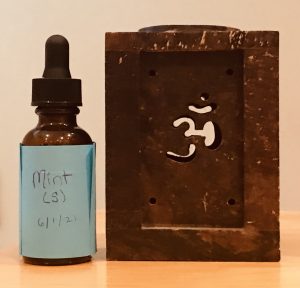 creates a harmonized, clean environment. It removes bacteria and promotes healthy gums and teeth and I’ve noticed a natural whitening too. It’s been shown to be helpful in preventing dental cavities and disease. In fact, earlier this month, I went to my six-month dental visit and they commended me on my flossing. When I told them that I’m actually flossing less and oil pulling daily, they were intrigued.
creates a harmonized, clean environment. It removes bacteria and promotes healthy gums and teeth and I’ve noticed a natural whitening too. It’s been shown to be helpful in preventing dental cavities and disease. In fact, earlier this month, I went to my six-month dental visit and they commended me on my flossing. When I told them that I’m actually flossing less and oil pulling daily, they were intrigued.
In traditional India, which is where Ayurveda derived, they have used oil pulling for a variety of circumstances including the following:
- Helping bad breath
- Preventing tooth decay
- Assisting with bleeding gums
- Boosting oral immunity
- Whitening teeth
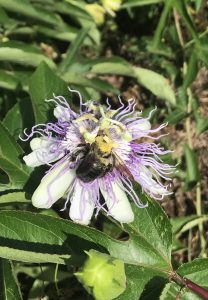 I love research so I found some studies that show the benefits that you can peruse at your leisure.
I love research so I found some studies that show the benefits that you can peruse at your leisure.
- Tooth brushing, oil pulling and tissue regeneration
- Comparison of methods for tooth health in school children
- The effect of oil pulling on Streptococcus
- Oil pulling to promote oral health
- Combatting gingivitis with oil pulling
- Additional studies
While traditional Chinese medicine (TCM) looks at the tooth meridian system that I mentioned earlier, Ayurveda believes that each section of the tongue is associated with different organ systems and oil pulling assists with cultivating harmony within. Eastern medicine views that all systems are connected and not separate entities or specialties as in Western medicine. To learn more, visit this link.
This is what you’ve been waiting for...the How-To
-
- Choose your oil (sesame, coconut, olive, sunflower – make sure oil is pure and no additives)
- When you wake up, before brushing your teeth, eating or drinking, take 1-2 tablespoons of oil and place in your mouth.
- Swish gently for 10-20 minutes.
- Spit out the oil (in trash since oil can clog a sink) and rinse with warm water. Don’t swallow the oil. If you do, it’s fine but the point is to remove bacteria from the mouth so it doesn’t enter the body.
- Brush your teeth as normal.
- Practice daily or at least a few times a week.
I’ve used sesame oil and then switched to coconut oil a year ago but try it yourself and see which oil you prefer.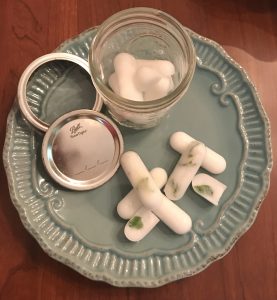 Just note that coconut oil is solid in the jar at room temperature and once you place in your mouth, it dissolves with the heat and turns to liquid. This practice is safe for anyone.
Just note that coconut oil is solid in the jar at room temperature and once you place in your mouth, it dissolves with the heat and turns to liquid. This practice is safe for anyone.
If you want to have fun with this practice, you can add herbs. Here’s the rundown but it doesn’t have to be complicated. You can start oil pulling with no herbs as shown above. I grow many herbs at home, harvest and create tinctures. I like to add these to my oil pulling cubes. My favorites are peppermint, spearmint, ginger, clove and cinnamon….usually one at a time (not altogether...that might not taste good!).
To make coconut oil pulling herb cubes, here are the directions.
- Note that your finished product is in a silicon mold that are ~1-2 tablespoons in size/cube. Determine how many tablespoons you need based on the container you're using to create your cubes/shapes. If you want to refrigerate or freeze in something else, that's fine too. If you do use a pan, you can break off chunks to store. It doesn't have to be pretty!
- Add unrefined virgin coconut oil to a saucepan and slowly melt until liquid. It happens quickly so keep an eye on it. I have not tried this with other oils as they are liquid starting off and not solid at room temperature.
- Once melted, add 5-12 drops of your tincture. If you don’t want to go to the trouble of having a tincture, you can simply tear up mint leaves and add to bowl/saucepan. You choose the amount. There’s no right or wrong.
- Pour into the silicon mold or whatever you’re using and place in refrigerator until solid (you can freeze too if that's desirable).
- Once solid, transfer your cubes to a glass jar and store in a cool place (doesn’t have to be refrigerated). I use a glass mason jar right now but I have recycled a coconut oil glass jar and stored there.
- Each morning, simply grab a cube or 1/2 cube that equals 1-2 tablespoons and gently swish as directed above. Play around with your recipe. I have even added chocolate mint and lemon peel to my cubes to create gourmet cubes. Maybe I've been watching too much of the Food Network on weekends. HA!
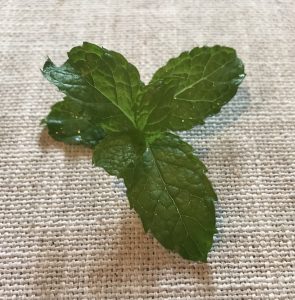 If you’re new to oil pulling and haven’t tried herbs or tinctures, give it a whirl. If you’re completely new to oil pulling, I hope you enjoyed the information. If you are a veteran oil puller, let us know the benefits you’ve seen.
If you’re new to oil pulling and haven’t tried herbs or tinctures, give it a whirl. If you’re completely new to oil pulling, I hope you enjoyed the information. If you are a veteran oil puller, let us know the benefits you’ve seen.

4 Comments
Congratulations, Celeste on receiving your Doctor of Naturopathy degree. That's impressive.
Thanks Keli. Love all that I learned and so happy to share the information with everyone through SAS Life blogs, seminars and programs.
Interesting, liked your article Celeste, thanks. I had a question. I regularly drink a cup of warm water with lemon & dash of honey first thing after waking up. Would you suggest oil pulling before of after this ? Does it make a difference ? Would like to add this to my routine, Thanks Celeste
I would oil pull first, brush teeth and then drink water.